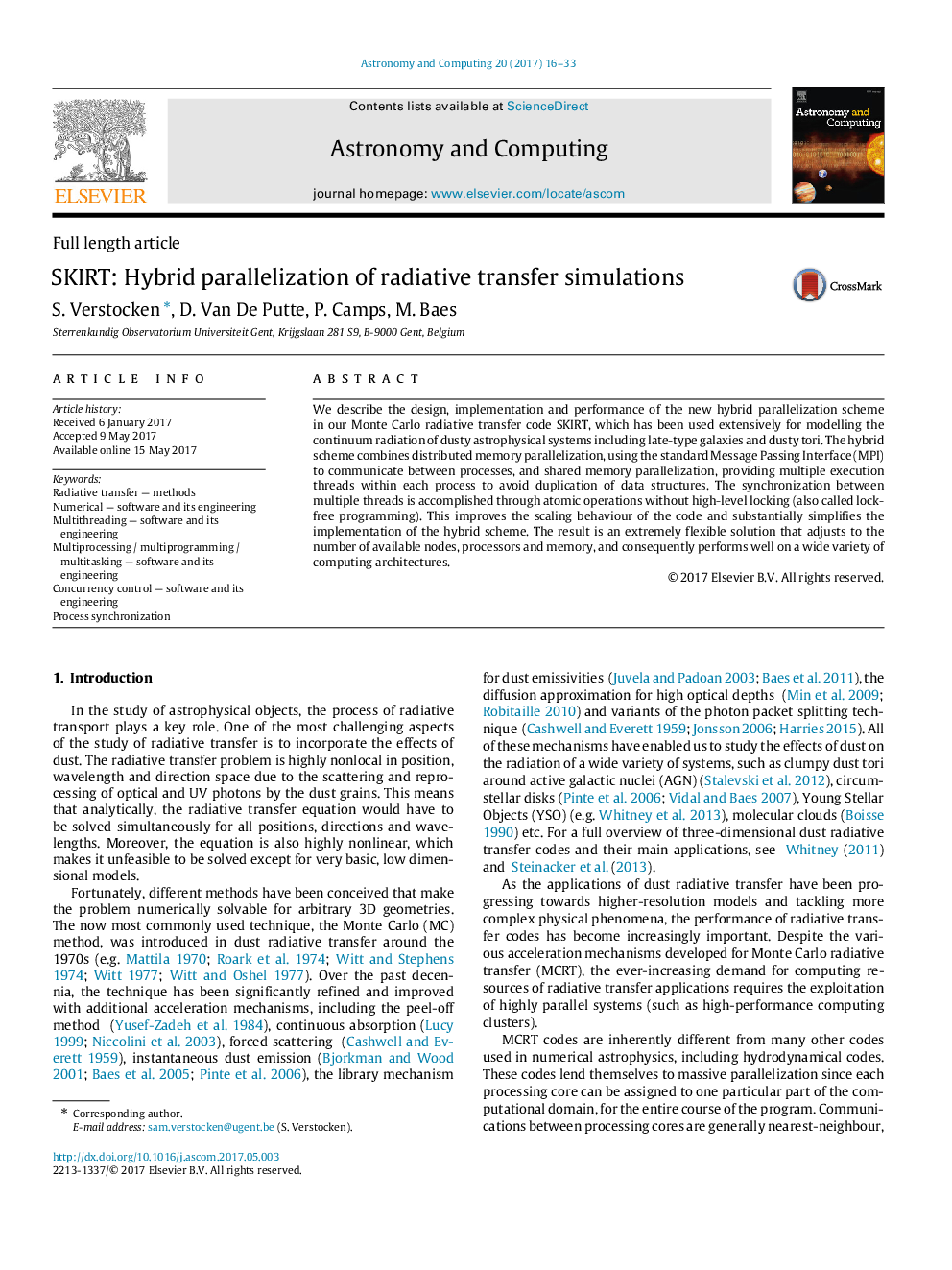| Article ID | Journal | Published Year | Pages | File Type |
|---|---|---|---|---|
| 4963642 | Astronomy and Computing | 2017 | 18 Pages |
Abstract
We describe the design, implementation and performance of the new hybrid parallelization scheme in our Monte Carlo radiative transfer code SKIRT, which has been used extensively for modelling the continuum radiation of dusty astrophysical systems including late-type galaxies and dusty tori. The hybrid scheme combines distributed memory parallelization, using the standard Message Passing Interface (MPI) to communicate between processes, and shared memory parallelization, providing multiple execution threads within each process to avoid duplication of data structures. The synchronization between multiple threads is accomplished through atomic operations without high-level locking (also called lock-free programming). This improves the scaling behaviour of the code and substantially simplifies the implementation of the hybrid scheme. The result is an extremely flexible solution that adjusts to the number of available nodes, processors and memory, and consequently performs well on a wide variety of computing architectures.
Keywords
Related Topics
Physical Sciences and Engineering
Computer Science
Computer Science Applications
Authors
S. Verstocken, D. Van De Putte, P. Camps, M. Baes,
